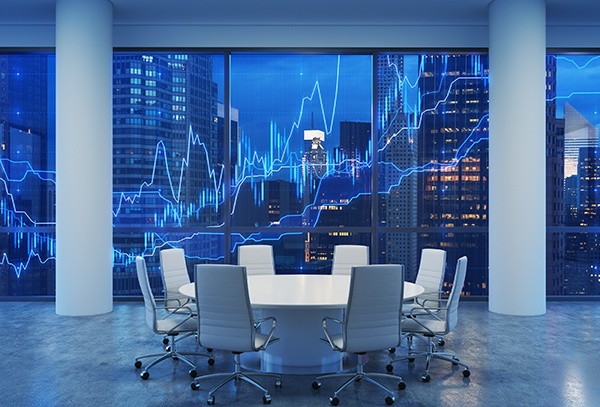
More and more, the business papers are starting to talk about the dreaded R word. With the US economy continuing to expand and the post Great Recession expansion on track to be the longest expansionary period in recent history, it's almost to be expected that there would be an eventual slowdown. However, if you're betting that the slowdown will make it cheaper to sign a commercial lease, you might be in for a nasty surprise.
First, the "recession" might not come as soon as you might expect. After all, the 2013 and 2014 papers were all littered with warnings of another recession in 2015, and, as of October of 2015, the economy is still growing. Given that this expansionary period has been marked by relatively low job growth and high levels of government stimulus, especially in the beginning, you could even argue that this expansion should last significantly longer than past ones simply because it hasn't been a "real" expansion for as long as it seems.
Leaving that argument aside, let's consider what a recession would do to commercial lease rates and space availability. For most markets, a recession will probably have little to no impact.
Today's commercial lease space market is largely split into two extremes. At one extreme, we find highly desirable spaces. In the office category, are typified by high quality urban CBD buildings, Millennial-friendly loft spaces in close-in areas and major LEED-certified trophy properties. On the other extreme, we find that even mid-size markets still have millions of square feet of semi or fully obsolete class C space that are achieving low rents and low occupancy rates.
A recession will probably make the Class C space even cheaper. Since you probably don't want to locate in it, though, those price reductions won't make much of a difference to you.
The situation for getting a commercial lease in the highly desirable space is different. When the suburban campus was the desirable location, there was always room to build another campus in another suburb. Now that central space is in vogue, though, scarcity comes into play. While cities can gentrify and expand their downtown districts, most of them have hard limits. Los Angeles can't grow with new towers in the mountains, Manhattan can't build new offices in the Hudson River and San Francisco can't expand South Beach into the Bay. The physical constraints will help to keep rents high.
At the same time, this expansion has been a uniquely responsible one. Typically, as the economy heats up, developers start constructing commercial lease space on spec. They simply build it and hope tenants will show up. Usually, that works for a while until the economy slows down. This time, however, there has been little or no spec building in most parts of the country. This means that we don't have a large inventory of vacant desirable space to sit and drag prices down.
Whether or not a recession comes in the relatively near future, it probably won't impact commercial lease space very much. Ultimately, demand is extremely high for good buildings in good locations, and this means that rents are likely to continue increasing. If you have the opportunity to lock down a space, the best time is now. That way you can gain control of it at today's rents instead of waiting and taking the risk of much higher rents in the future.
Other great articles:
The Future of Office Space
6 Ways to Reduce Occupancy Costs
Managing Your CRE Portfolio as a Second Job
Subscribe to our blog for other great CRE articles!








